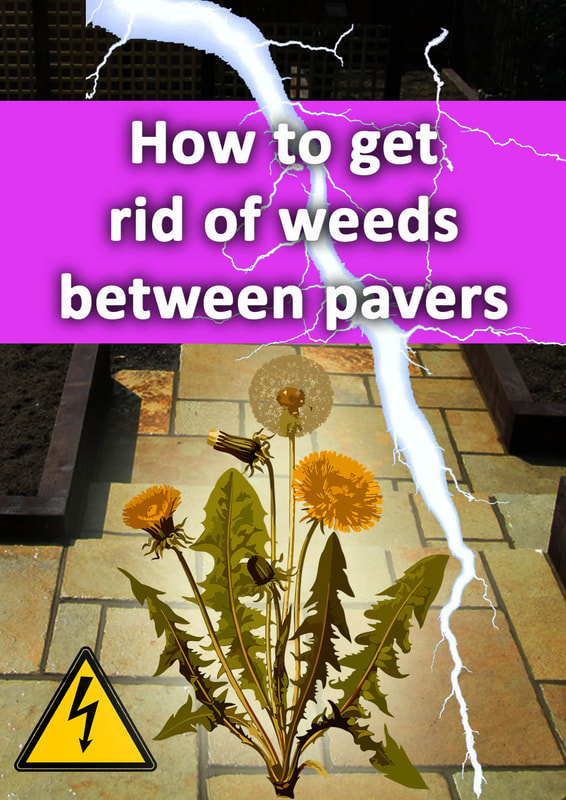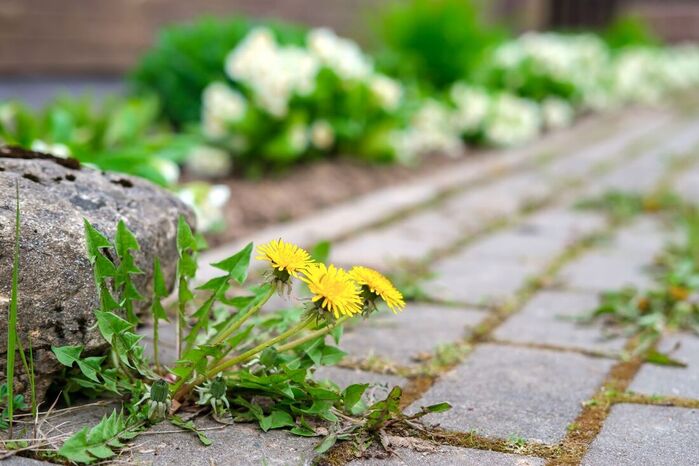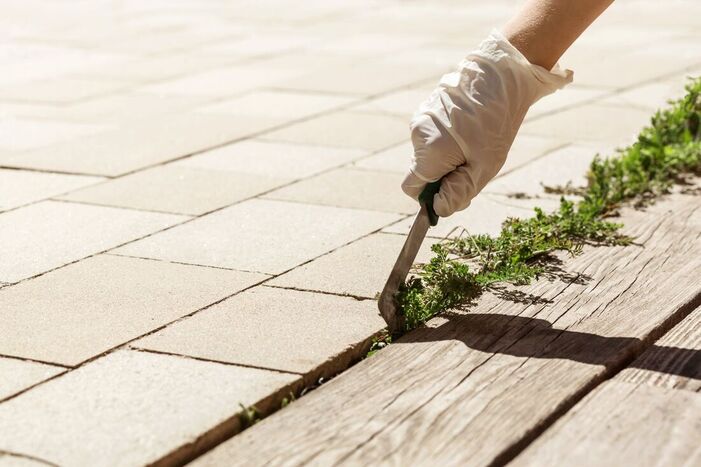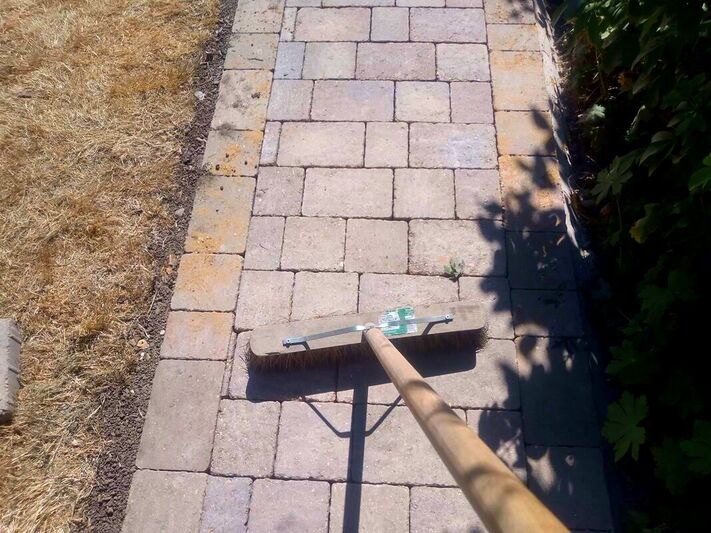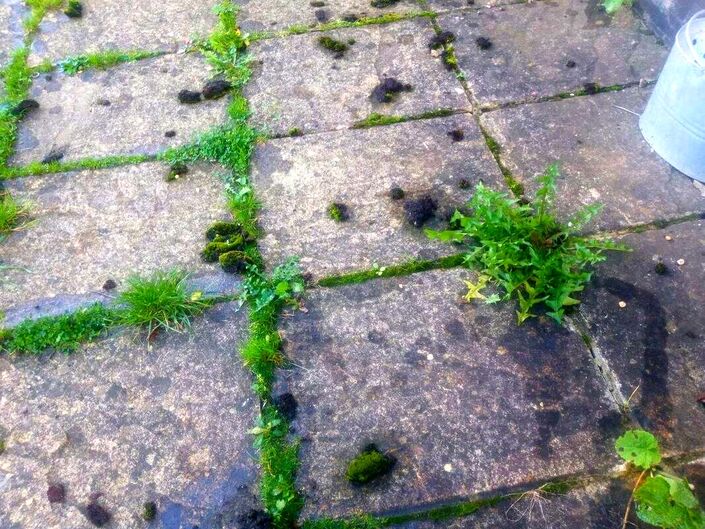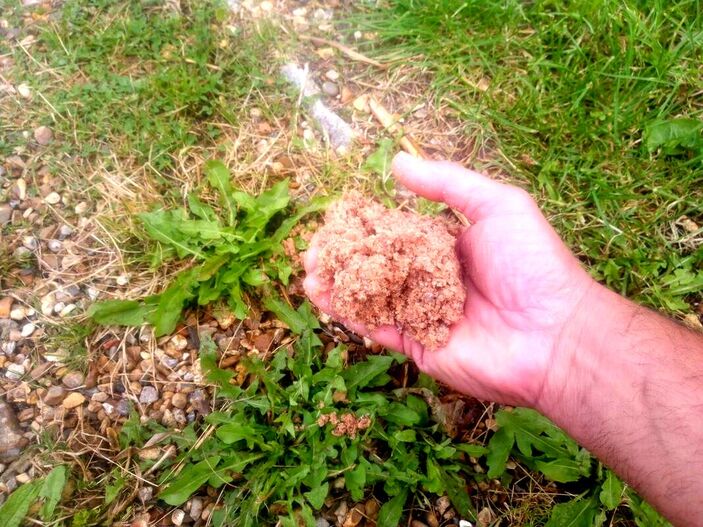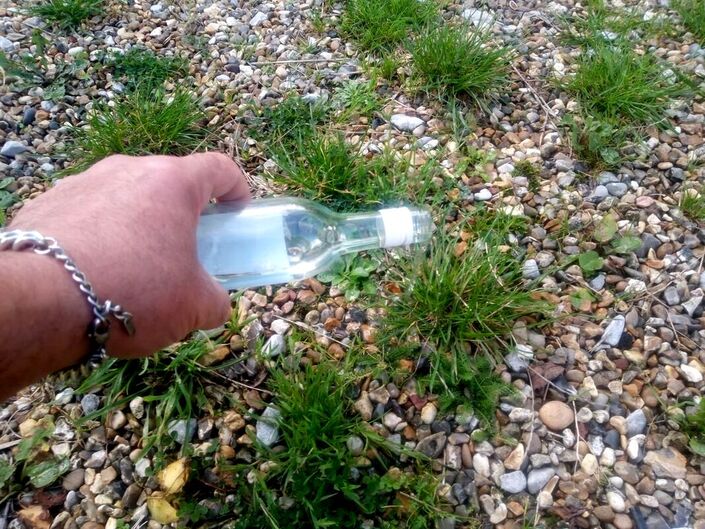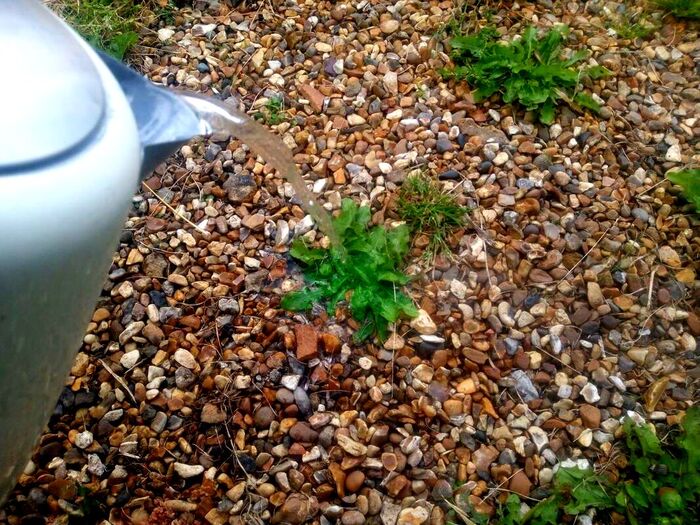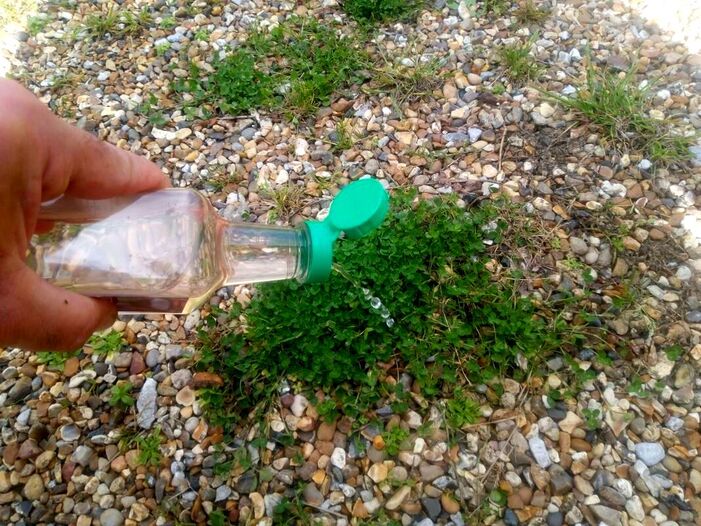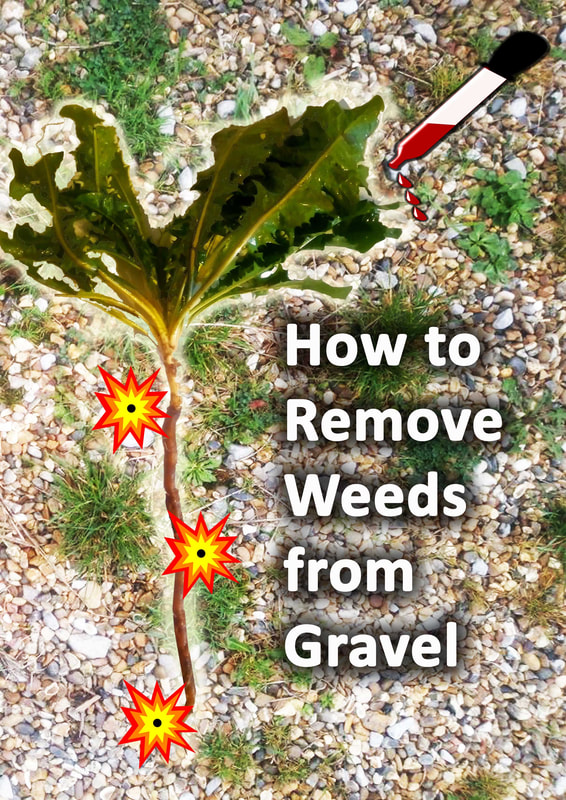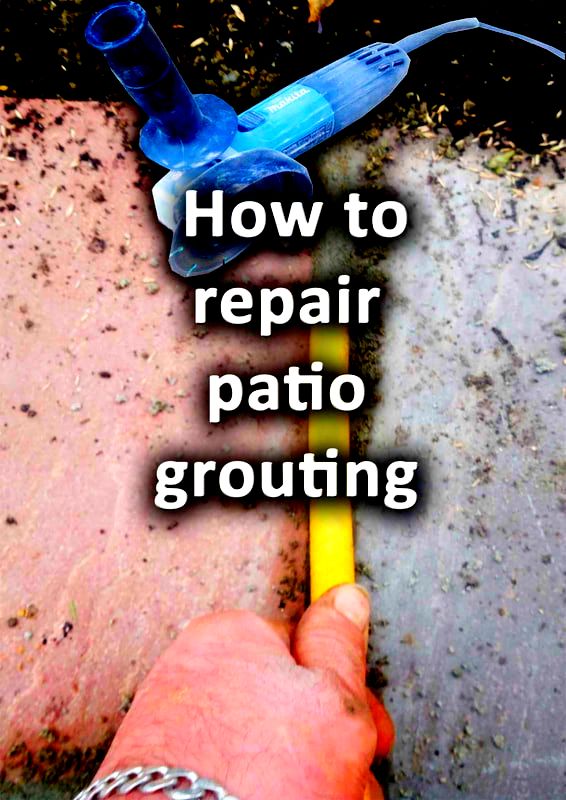|
This article contains affiliate links
If you want to remove weeds from between pavers you are not alone. Weeds growing between the gaps of paving are one of the most frustrating garden foes.
Not only does removing weeds from paving take much time and effort it is also very awkward. The problem is once weeds have started to grow between pavers they are almost certain to return. This can make clearing driveways and patios an up hill battle which never ends. Weedy patios and driveways can really make your property look unkept and ugly. Consequently, here, I will explain the methods and steps you can take to get rid of weeds between pavers for good. Why do weeds grow between pavers?Many weeds are known as pioneer plants as they are able to colonise new areas quickly. Very often these weeds can colonise rather inhospitable environments such as rocky ground and paved surfaces. Pioneering weeds rarely require the same levels of nutrients and water as typical garden plants. The seeds of weeds can be blown great distances by the wind and can become lodged between gaps between pavers.
These crevices provide just enough moisture, nutrients and sunlight to germinate and become established.
most of the weeds you find growing between are particularly drought resistant and hardy. Some typical examples include the dandelion, sorrel and grasses. Such weeds have robust root systems and a low growing habit making them difficult to eradicate from paved surfaces. How to remove weeds from block pavingThe only sure way to remove weeds from block paving and stop them reoccurring is to replace the sand between the pavers. The reason the gaps between block pavers become full of weeds is because dirt has accumulated between the gaps over time. This provides enough nutrients for weeds to become established. Weeds will have to be manually levered out with a long and thin tool such as a patio weeding knife. Then you will have to pressure wash out all the remaining sand and dirt from between the pavers. Make sure this is done on a warm and dry period when the weather is fine.
Remove the old sand from the surface and allow the driveway to dry out. The next day when the block paving gaps and surface are totally dry sweep in salt to all the gaps.
When the gaps are completely dry fill the gaps with block paving or sweeping in sand. This will rejuvenate the block paving and stop weeds from re-establishing themselves within the surface. Make sure you do not drive on the block paving when there is no sand between the gaps. This will stop the pavers from displacing and moving when there is no sand to lock them in place.
To kill weeds between block paving you can use other weed killer methods such as vinegar and chemicals. However to stop the weeds common back you will need to replace the sand between pavers as described.
How to remove weeds from between paving slabs
It is very typical for weeds to become established between paving slabs. This is especially so if the paving joints have not been mortar pointed. If your paving has been butted up then there is a chance weeds will establish in the fine gaps between pavers. Very often paving slabs are not laid onto a firm and solid base. this leads to pavers moving exacerbating gaps and cracked mortar between paving.
Consequently, the best way to get rid of weeds between paving slabs is to remove them and repoint the paving with mortar.
not only will this remove the weeds by the roots it will stop them re-establishing themselves. If you have slabs which rock or move around when walked upon they will need to be re-laid upon a solid mortar base. 4 Homemade solutions for getting rid of weeds in pavingThere are a few homemade solutions for killing weeds in between your pavers. Below I have listed four of these methods which are not too damaging to the environment. Bear in mind that weeds between paving can be more challenging to kill than weeds within gravel or soil. This is because the paving can create an impenetrable barrier between the roots and the surface. Consequently it is best to use these weed killer methods during the summer when the ground is dry. This will enable the substances to be drawn towards the roots of the weeds. 1. Rock salt
Rock salt is surprisingly effective at killing weeds down to the roots. Rock salt dehydrates the weed making them simply shrivel up and die. This method is more effective during the summer when there is less threat of moisture within the ground dissolving the salt. However most weeds can not withstand salty conditions and generally die within a few days. For block paving you may have to use a finer table salt so the granules sink down in between the pavers. 2. Vodka
As much as it is a shame to waste alcohol it is true that vodka is an effective weed killer. In fact any alcoholic drink around 40% and above alcohol works well. When using alcohol to kill weeds between pavers wait for a warm and dry day. Pour your vodka very slowly using a very thin trickle and make sure every drop sinks in around the weeds. You want to make sure enough is applied to saturate the weeds roots under the paving. Typically weeds treated this way will slowly die over the next few days. 3. Boiling waterBoiling water is very effective at killing weeds right down to the roots. The great thing about using this method is you are not adding anything that can change the chemical composition of the surrounding ground. The main drawback however is water can cool down before it reaches the roots. This is especially so for weeds growing between paving that have extra protection from the paving slabs. However, it is certainly worth trying first before any more toxic options. Once again this method is much more effective during the summer months. 4. Vinegar
If you want to kill weeds between pavers without using chemicals then vinegar is a great option. The strong acids within vinegar break down the plant cells within weeds helping to kill them off. However you will need to apply enough so the vinegar reaches the roots. This can be challenging particularly if the roots are protected by pavers. Therefore it is better applied during warm and dry summer weather when the roots are more likely to be dry. Trickle the vinegar onto the centre of the plant slowly so it seeps down to the roots. Weed killers for removing weeds from paving
Many people are moving away from chemical herbicides for managing garden weeds. Chemical weed killers used on paving mean toxins can be washed into drainage networks during times of heavy rain. Such drains can find their way into natural watercourses where they kill aquatic plants and wildlife. Furthermore such chemicals can remain within the hydraulic cycle which we ourselves may also consume. If you do need to use chemical on paving make sure it does not fall into local drainage networks. There are two main types or chemical weed killers used for paving on the market; spray weed killers and sweep in weed killers. Spray weed killers
There are many brands of spray weed killers on the market today. These are mainly contact weed killers which when sprayed will kill the weeds down to the root. However, for robust, perennial weeds you may need a few treatments for stubborn subjects. I have linked to a popular brand below. Sweep in weed killers
Sweep in weed killers are specifically designed to be swept in between pavers. these weed killers not only kill weeds on contact they also prevent weeds from growing back. These weed killers are especially useful for killing and supressing weeds between block paving pavers. I have below linked to a popular sweep in weed killer, No grow from Dansand. Tools for removing weeds from block paving & slabs
Removing weeds from in between pavers is a rather specific exercise which requires specific tools. This is especially the case if you are weeding between block paving or paving slabs with broken mortar. Below I have listed 5 main weeding tools that are ideal for removing weeds from paving. Thermal weeders
Thermal weeders are electrical devices designed to kill off weeds with extreme heat. These weeding gadgets consist of a metal cup or heat mouth at the front which is placed over the top of the weeds. A pulse of heat up to 600 degrees Celsius blasts the weeds causing it to instantly shrivel and die. However thermal weeders may not be as effective on paving with large perennial weeds with deep tap roots. Weed burners
Weed burners are gas powered devices very similar to blow torches which enable you to burn weeds to their death. These are very powerful weeders and can easily kill weeds down to their core. The only issue you may have is burning and scorching your paving. This can leave burn marks or in extreme cases fracturing to the edges of your paving. If you do need to use a burner for weeds in paving it would be better to experiment with an out of sight trial area first. Weeding hook hoe
Weeding hook hoes are particularly efficient at removing weeds from between pavers. They consist of a long handle and sickle like hook which is perfect for picking and scraping weeds out of crevices by the roots. Hook hoes come in a variety of different shapes and styles. Weeding brush
Weeding brushes are very efficient at removing stubborn weeds from gaps between paving and concrete. They are particularly effective at removing low growing weeds such as grasses and moss. The ridged wire brush easily blasts out tough weed roots as well as debris from the gaps between pavers. This makes it troublesome for weeds to become established once more. Weeding knife
When it comes to removing weeds from paving you need a tool which is long and sharp. This enables you to penetrate the deepest gaps and lever out the weeds by the roots. One of the best tools for this is a weeding knife, these come in a range of styles and designs. I have included a good example of such below.
Thank you for reading our article on how to remove weeds from between pavers. Below I have linked to some other articles you may find useful.
'As an Amazon associate I earn from qualifying purchases'
0 Comments
Leave a Reply. |
The Author
|
Landscaping services across Buckinghamshire, Amersham, Aylesbury & High Wycombe
Hyde Heath, Amersham, Buckinghamshire |
|
